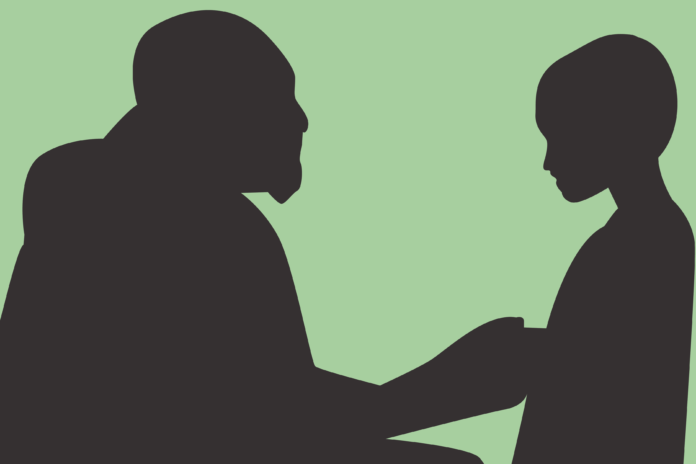Inner child work is more than an online trend, according to psychotherapists
By KACEY CHAN — features@theaggie.org
Students may have come across TikTok posts about someone taking a self-care day or buying a fidget toy. These videos are often tagged something along the lines of “#innerchildhealing” or “#innerchildwork.” However, a lot of people might not know what an “inner child” even is and may just consider it another pseudoscience online trend.
The inner child is, in fact, a very real concept in psychotherapy though. Carl Jung, the famous psychiatrist who founded analytical psychology, is credited with first proposing the inner child concept.
Essentially, it is a part of us which sits inside our minds and influences who we are and the decisions we make, according to an article from the CPTSD Foundation.
“Inner children were us when we were kids that never grew up,” the website reads. “Adults are covertly controlled by their unconscious inner child […] and it is the lens through which injured adults make their decisions.”
Working to heal your inner child can take many forms. Instead of there being one specific methodology of “inner child work,” there are many different approaches that therapists utilize in their practices. Areas such as internal family systems therapy, ego-state therapy and schema therapy are all proven ways of working to heal the inner child, as stated in an article from Time Magazine.
Sevil Gonen, LMFT, is a therapist at a Davis practice, Three Figs Counseling. She employs inner child work through her specialty — emotion-focused therapy (EFT).
“Emotions run fast and hot,” Gonen said. “Because that neural wiring is so fast, EFT helps by slowing way down and rewiring that in a healthy way so it sticks.”
EFT is based on the idea that emotion drives behavior. Gonen said that she often sees peoples’ inner children being utilized when she works with couples.
“When couples fight about the dishes, it’s never really about the dishes,” Gonen said. “Rather, the conflict is the interaction between the two partners and something underlying it going on.”
According to Gonen, one partner might perceive the dishes as a long to-do list that needs to be finished as soon as possible and therefore panic about it. From the other partner’s perspective, though, the dishes are just fine; they are happy to do what the former wants but don’t understand why their partner is so stressed.
“In therapy, maybe we learn [that] in their childhood, the [stressed] partner was taught to be quiet or not make a fuss, leading them to struggle with asking for help as an adult,” Gonen said. “Over time, we can heal that wound in this person’s inner child.”
Inner child work is not only applicable for couples but is also extremely beneficial for individual therapy. A particular exercise Gonen employs is roleplay. The idea, essentially, is that the therapist acts as a medium for the individual to create a dialogue with their past and unpack painful experiences.
“If the experience involves a parent, for example, I may ask them what that parent would say realistically,” Gonen said. “Then afterward, I’d ask them to state what a strong, wonderful parent would say to you instead.”
Gonen said she wants her clients to visualize what their inner child needs and then provide it for themselves instead.
“I want to empower the individual to become what they needed as a kid, what their inner child now needs today,” Gonen said.
Inner child work helps people by allowing them to acknowledge their past and heal from it. Some individuals may have had wonderful, less traumatic childhoods with emotionally well-adjusted parents, making them able to form secure attachments. Others might have instead faced trauma or other difficult circumstances causing them to ignore their inner child and not process those experiences in a healthy way.
“As we grow up, our inner child gets continually muted,” Gonen said. “We may set aside their needs to be an adult and be responsible, but that doesn’t change the inner child screaming inside us.”
This contrast in childhood is why certain couples might see one person being consistently more stressed than the other or starting arguments, according to Gonen.
“Their partner may not understand why the other is in turmoil and why things are so challenging,” Gonen said.
Those with healthier childhoods generally become more in tune with their inner child and are able to handle such stressors, while those who are not tend to struggle more with processing stressors.
In regards to the social media trend, Gonen believes the trend represents young people utilizing an innocence they feel they’ve lost.
“I see a lot of teens, and I’ve noticed this shift where they accomplish all these things like learning a language, getting into school, then getting their dream job, but they are now more depressed and dissatisfied than before,” Gonen said. “Because they don’t have enough time to both fulfill these goals and find what makes them happy, young people get distracted by these supposed metrics of success and miss out on finding happiness.”
According to Gonen, connecting to the inner child is a way for teens to take a break from life stressors and remember what they actually want and need.
While there is no one-size-fits-all solution to healing the inner child, it is an extremely useful part of therapy that allows individuals to process traumas in a healthy way. While it is possible to work on your inner child by yourself through online resources, according to Time Magazine, it can be especially beneficial to work with a mental health professional. It can help people form adult relationships with healthy boundaries and also empower individuals to become what they needed growing up.
“The work is slow,” Gonen said. “But once we can acknowledge the past and heal it, we actually heal the present time too.”
Written by: Kacey Chan — features@theaggie.org




